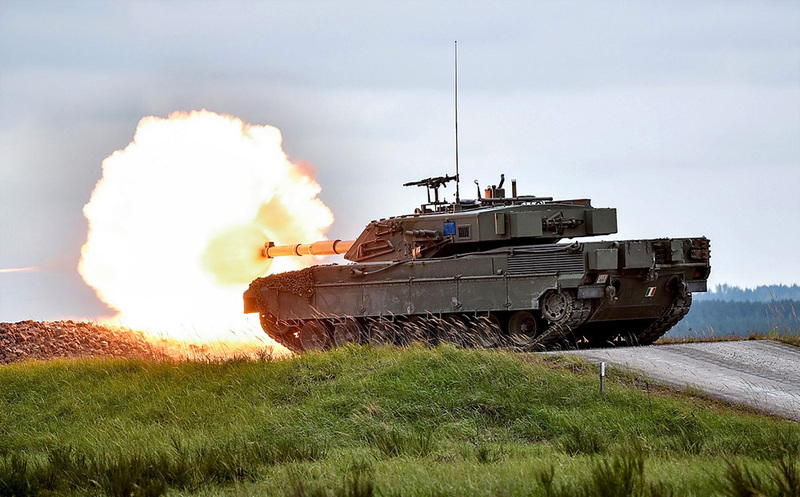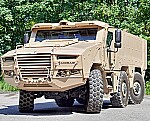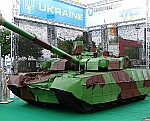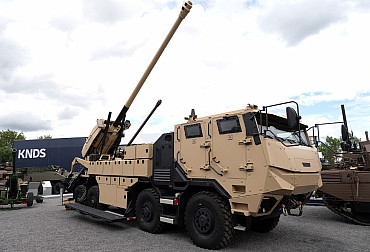125 modernized Italian MBTs Ariete will see service together with the German Leopards
In 2022, the Italian Government announced its intention to invest nearly €880 million to modernise 125 of the 200 C1 Ariete Main Battle Tanks. Given that Italy is to operate at least 250 tanks, the other 125 will be the German Leopards 2A8. However, the C1 Ariete, upgraded to C2/C3, will remain in service for many years before the current battle tanks are replaced by a new-generation vehicle.
Between the 1950s and 1970s, Italy mainly used tanks of American origin: Shermans, Stuarts, M24 Chaffees, M47 Pattons and M60A1s. The purchase of German equipment enabled Rome to free itself from American control. Later still, a new milestone was reached with the assembly, on national soil, of German Leopard 1s, following the purchase of the armoured vehicle licence.

The accumulated experience then enabled a series of purely Italian-built prototypes to be produced. These experiments gave rise to the OF-40 tank, developed specifically for export. In 1984, the Italian army general staff approved a programme of new acquisitions comprising various types of vehicle, including a new Main Battle Tank, initially called the "C1 Tricolore" and later the "Ariete". The name was given in memory of the famous armoured division of the same name, which fought valiantly in North Africa during the Second World War.
At the end of 1986, the first prototype was presented by the Iveco-Fiat-Oto Melara consortium. This was followed by 5 other vehicles for a long series of tests and demonstrations, before the final order was placed in 1994. Although the initial delivery was for 300 units, only 200 Ariete were assembled. In addition, the production of 200 other improved models, known as the Ariete 2, as well as that of the recovery variant, was abandoned. Finally, despite numerous contacts and trials carried out abroad, no orders for the Ariete were confirmed.
Belonging to the second improved generation of Main Battle Tank, the Ariete was initially equipped with sophisticated and more modern equipment than the first versions of the Leopard 2 and M1 Abrams, as well as the Russian T-80 and T-90. On the other hand, its armour was not up to the standards of its main rivals, a feature directly linked to the decision to keep the tank's mass below 54 tonnes for its basic version. However, the plates are inclined in the areas most exposed to enemy fire, as well as at the rear, where the armour provides maximum protection. The undercarriage is partly covered with removable composite plates. Inside the tank, there are Spall-liners designed to retain any shrapnel. The tank's protection is completed by an anti-fire and anti-explosion system.
C1 Ariete’s armament
The main armament consists of a 120mm Hitfact smoothbore gun, 44 calibres long, made by Oto Melara. Particularly accurate, this gun can fire a wide range of ammunition. The other weapons on board include two MG42/59 7.62 mm machine guns, the first coaxial and the second on the turret, plus eight Galix 80 mm grenade launchers (four on each side of the turret) combined with a laser search system. The smoke grenades can be activated manually or automatically, in case the armoured vehicle is illuminated by an enemy laser. The ammunition-carrying capacity is 42 120mm shells with semi-combustible casings (11 rounds ready for use, 4 rounds in the turrets and 27 in the box near the driver) and 2,500 rounds of 7.62 mm ammunition.
Thanks to its sophisticated fire-control system, with a Hunter Killer function, the Ariete is capable of firing on the move, even at long range and at night, or in poor visibility. Optoelectronic equipment includes a self-stabilising panoramic periscope for the tank commander and a thermal camera aiming periscope, linked to a laser rangefinder, for the aimer. A digital ballistic computer and meteorological and ballistic sensors complete the system. The self-diagnosis, communication, air-conditioning, NBC with pressurisation, laser alarm and infrared trace reduction systems are all state-of-the-art.
Powertrains and undercarriage
Powertrains include a rear-mounted Iveco 12-cylinder V-turbodiesel engine developing 1275 hp, a 4 forward and 2 reverse speed automatic transmission and a hydrostatic steering wheel with 3 turning radii. The undercarriage comprises 7 track rollers and 4 carrier rollers. The sprocket is located at the rear. The undercarriage and suspension are directly derived from the M60A1 and Leopard, providing excellent performance on all types of terrain. The main fuel tank is located on the left-hand side of the body, with a secondary tank on the right-hand side and 2 auxiliary tanks in front of the engine, giving the Italian tank a range of 550 km.
The crew is made up of 4 men: the tank commander and gunner sit on the right of the turret, the radio operator/serviceman on the left and the driver on the right of the body. The driver's seat is telescopic to allow the driver to roll his head outwards or, once retracted, to allow passage to the combat compartment. The emergency door is located at the bottom of the body.
Combat deployment
The dispatch of 6 Ariete tanks to Iraq in May 2004 as part of the 'Antica Babilonia' operation necessitated the fitting of several additional sets of armour, subdivided into modules of various shapes and weights. These elements significantly increase lateral protection, particularly against hollow charge rocket launchers, which are very commonly used in these theatres of operations. However, these modifications have been made at the expense of mobility, as the mechanics have not been adapted to the extra weight.
In addition to the extra protection, the distinctive features of the armoured vehicles operating in Iraq are the adhesive markings, bearing the name "Italia" in Arabic characters, and the 2 MG42/59 machine guns, protected by a shield on the turret roof. Before the withdrawal of the Italian contingent in 2006, the crews belonged to different units, which carried out a tour of duty in shifts of varying length, depending on the vagaries of the local situation.
The first Ariete tank models had a green-olive livery; today, the camouflage of Italian vehicles has changed and the C1 has also received it: the new camouflage is 3-tone with a distribution of 45% green, 41% black and 14% brown with a tolerance of +/-0.5% for each colour. There are also plans to adopt camouflage for snowy and desert areas. The paints used are designed to reduce the thermal signature of the vehicle as well as providing greater resistance against chemical attacks (these paints are referred to as CARC, Chemical Agent Resistant Coatings).
Modernization efforts
The tanks at the start of the series had a curved smoke extractor for the 120 mm muzzle. However, this was soon replaced by a more robust cylindrical model, which was also adopted on tanks already delivered. Other features of the early models were an additional plate added to the front glacis of the body. A more advanced thermal imaging camera has been fitted to the last 55 Ariete models produced, and subsequently retrofitted to the early models.
In the early 2000s, the Italian Army expressed interest in developing a new version of the C1 Ariete called the C2 Ariete or Ariete Mk. 2. Three hundred examples of this new version were due to enter service over the following years. Due to budget restrictions, the order was reduced to 200 and then cancelled. The plan was to gradually incorporate the improvements made by the C2 Ariete / Ariete Mk. 2 into the C1 fleet.
In 2022, the Italian government announced its intention to invest nearly €880 million to modernise 125 C.1 Ariete out of the 200 deployed by the Esercito Italiano. This will involve fitting them with a new 1,500hp Iveco powertrain, improved fire control and additional protection against mines and IEDs.
C1 Ariete specification:
- Length: 10.54 m
- Height: 2.50 m
- Width: 3.61 m
- Weight: 53.8 t
- Crew: 4 men
- Engine: Iveco MTCA Diesel, 12 V-cylinders, 25760 cm3
- Power: 1275 hp at 2300 rpm
- Maximum speed: 65 km/h
- Range: 550 km
- Ground pressure: 0.85 kg/cm²
- Main armament: Oto Melara Hitfact 120 mm
- Secondary armament: 2 to 3 MG42/59 7.62 mm










